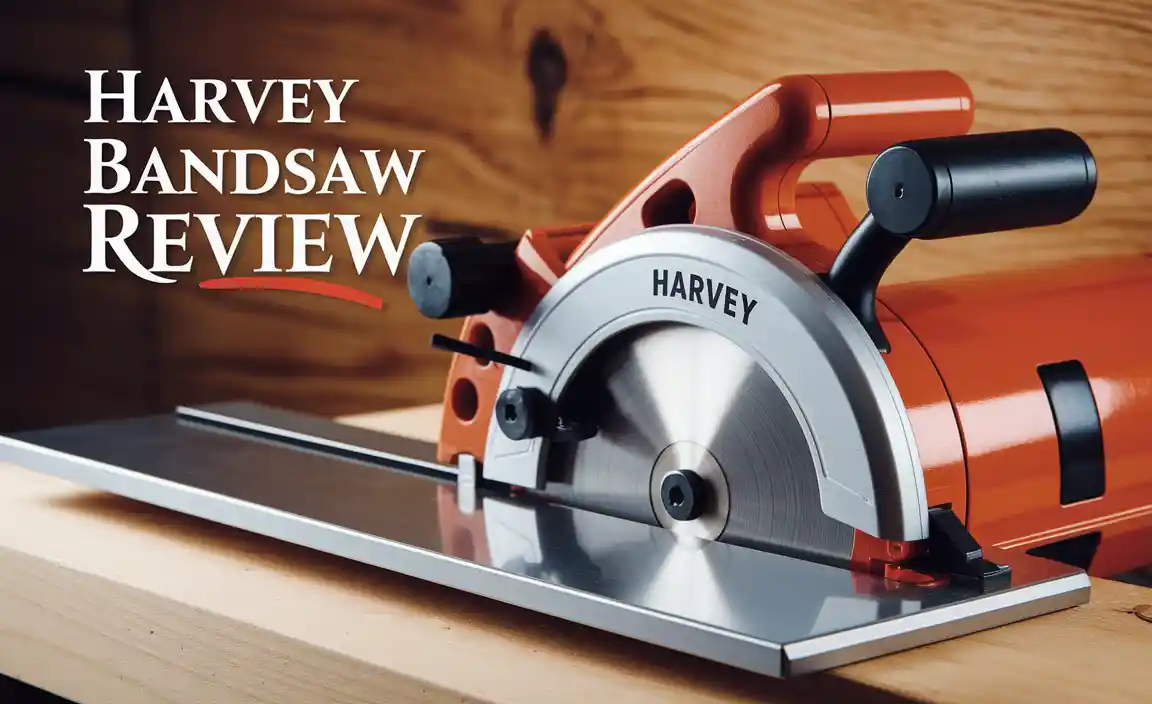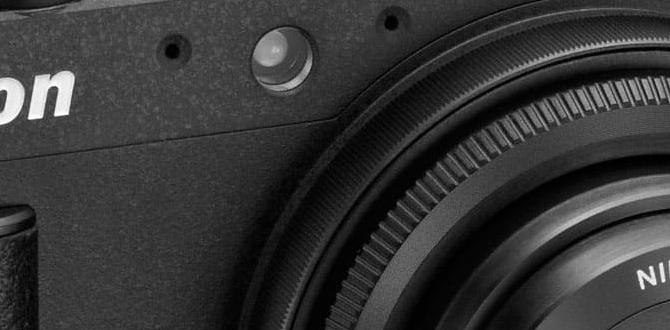Summary: **Mastering nail guns for hardwood flooring is achievable! This guide breaks down how to use a flooring nailer correctly, ensuring a secure, beautiful installation for your DIY dream home. Get your floors looking professionally done with these simple steps.
Installing hardwood flooring can seem like a huge undertaking, but using the right tools makes it much more manageable. One of the most critical tools for this job is a flooring nail gun. It’s designed specifically to drive nails at the perfect angle into the tongue of your hardwood planks, securing them firmly to the subfloor. Without the proper technique, you could damage your beautiful new floors or end up with loose boards. Don’t worry, though! With a little guidance, you can confidently tackle this project and achieve stunning results. This guide will walk you through everything you need to know, from choosing the right nail gun to safely and effectively installing your hardwood flooring.
Table of Contents
Why Use a Nail Gun for Hardwood Floors?
When it comes to laying down hardwood floors, a nail gun isn’t just a convenience; it’s almost essential for a durable and professional-looking finish. Manually hammering nails into hardwood planks is incredibly time-consuming, labor-intensive, and significantly increases the risk of damaging the wood. You might hit your thumb, dent the flooring, or fail to drive the nail straight, leading to weak points in your floor.
Flooring nail guns, also known as hardwood flooring nailers, are specifically engineered for one job: to drive fasteners through the thick, dense wood of hardwood planks at the precise angle needed to catch the tongue. This ensures each board is securely anchored to the subfloor, preventing squeaks and shifting over time. They also drive nails much faster than by hand, dramatically speeding up your project.
Think of it this way: hardwood is tough stuff! A dedicated flooring nailer has the power and the specialized head to deal with it effectively. Using one makes the difference between a floor that looks like it was installed by a pro and one that shows signs of a struggle. Plus, for most DIY projects, renting or buying a flooring nailer is a worthwhile investment for the time, effort, and quality you gain.
Types of Flooring Nail Guns
Not all nail guns are created equal, especially when it comes to hardwood flooring. The primary types you’ll encounter for this specific task are pneumatic and electric. Each has its own pros and cons, and understanding them will help you choose the best fit for your project and budget.
Pneumatic Flooring Nailers
Pneumatic nail guns are powered by compressed air from an air compressor. They are the traditional workhorses for hardwood flooring installation.
- Pros:
- Power: They offer excellent power, easily driving nails into even the hardest woods.
- Speed: They are very fast, allowing for rapid installation.
- Durability: Generally built for heavy-duty use and can last for many years under professional use.
- Weight: Often lighter than electric models, which can be a big plus during long days of flooring.
- Cons:
- Requires an Air Compressor: You need to purchase or rent a separate air compressor, which adds to the cost and complexity.
- Hose Management: You have to manage an air hose, which can sometimes get in the way.
- Noise: They can be quite noisy, especially with the compressor running.
Electric Flooring Nailers (and Staplers)
Electric models, both corded and cordless, provide a more self-contained solution. For hardwood flooring, you’ll primarily see electric nailers that often use L-shaped cleats, or sometimes “flooring staplers” which use T-shaped staples. While staples can work, cleats are generally preferred for hardwood longevity. For the purpose of this guide, we’re focusing on the mechanics similar to pneumatic nailers, whether powered by electricity or air.
- Pros:
- Portability: No need for an air compressor; easier to move around a job site. Cordless models offer maximum freedom.
- Ease of Use: Often simpler to set up and operate, especially for beginners.
- Quieter Operation: Generally less noisy than pneumatic systems.
- Cons:
- Power Limitations: Some electric models may struggle with extremely dense hardwoods, though newer models are very capable.
- Cost: Can be more expensive upfront, especially high-end cordless models.
- Cord (for corded): A cord can still be a tripping hazard or limit your reach.
- Battery Life (for cordless): You’re reliant on battery charge, so having spares is often necessary for larger jobs.
For most DIYers tackling a room or two of hardwood, either type can work well. If you plan on doing a lot of flooring work in the future, investing in a quality pneumatic setup might be more economical in the long run. For a single project and ease of use, a good electric model is a fantastic choice.
Essential Tools and Materials
Before you even think about firing up a nail gun, make sure you have all your ducks in a row. Having the right tools and materials ready will make the installation process smooth and prevent frustrating delays. Besides your chosen flooring nailer, here’s what you’ll need:
- Flooring Nail Gun: As discussed, choose pneumatic or electric based on your needs.
- Air Compressor (for pneumatic): Ensure it has enough power and a regulator to control pressure.
- Air Hose (for pneumatic): A good quality hose that reaches where you need to go.
- Flooring Nails (or Cleats/Staples): These are specifically designed for hardwood flooring nailers, usually L-shaped. Make sure they match the gauge and length recommended for your flooring and nail gun. Check manufacturer recommendations for best practices, for example North American Hardwood Association often has data useful for professionals and DIYers alike.
- Subfloor: Typically plywood or OSB, already installed and in good condition.
- Underlayment/Moisture Barrier: Depending on your subfloor and the type of hardwood (solid vs. engineered), you might need felt paper or a plastic moisture barrier.
- Measuring Tape: For accurate layout and cutting.
- Pencil: For marking.
- Chalk Line: For long, straight layout lines.
- Miter Saw or Hand Saw: For cutting planks to length.
- Jigsaw: For cutting around obstacles.
- Tapping Block: A crucial tool for gently persuading boards into place without damaging them.
- Pull Bar: Used for the last row of flooring where the nailer won’t fit.
- Safety Glasses: ALWAYS wear these when operating any power tool.
- Work Gloves: To protect your hands.
- Knee Pads: You’ll be on your knees a lot – save them!
- Dust Mask: Protect your lungs from sawdust.
- Vacuum Cleaner: To keep the work area clean.
- Hammer: For occasional adjustments or manual nailing in tight spots.
Preparing Your Subfloor and the Room
A beautiful hardwood floor starts with a solid foundation. Proper preparation is key to a professional and long-lasting installation. Don’t skip these crucial steps!
Subfloor Inspection and Preparation
Your subfloor is what the hardwood planks will be nailed into. It needs to be:
- Flat and Level: Check for high spots or low spots. High spots can be sanded down. Low spots might require leveling compound. The recommended tolerance is usually no more than 3/16″ over a 10-foot span. Refer to your specific flooring manufacturer’s guidelines.
- Clean: Vacuum thoroughly to remove all dust, debris, and old adhesive. Any grit can get under the flooring and cause problems.
- Dry: Moisture is the enemy of hardwood. Ensure the subfloor is completely dry. For concrete subfloors, a vapor barrier is almost always required. A relative humidity test is recommended for concrete subfloors, often requiring a reading below 70% RH. You can find guidance on moisture testing from resources like the National Wood Flooring Association (NWFA).
- Sound: Walk around and listen for any squeaks. If you hear any, screw down loose sections of the subfloor to the joists below.
- Structurally Sound: Ensure your subfloor is thick enough and properly supported by floor joists. Most manufacturers require a minimum of 3/4″ thickness for subfloors (plywood or OSB).
Room Preparation
Before you bring in the flooring:
- Acclimatize the Wood: Hardwood naturally expands and contracts. Let the unopened boxes of flooring sit in the room where they will be installed for several days (usually 3-7 days, check manufacturer instructions) to adjust to the room’s humidity and temperature.
- Remove Baseboards (carefully): If you want a clean finish, carefully pry off existing baseboards. You can reattach them later, or install new ones.
- Clear the Area: Remove all furniture and accessories from the room.
- Plan Your Layout: Decide which direction your planks will run. Typically, they should run parallel to the longest wall in the room or perpendicular to the floor joists. This often makes the room look larger and the installation easier.
- Establish a Starting Line: Use a chalk line to mark a perfectly straight line for your first row of flooring. This line should be the correct distance from the wall to ensure the first board is parallel and the last board can be ripped correctly.
How to Use a Flooring Nail Gun: Step-by-Step
Now for the main event! Using a flooring nail gun correctly is crucial for a secure and beautiful floor.
Step 1: Set Up Your Nail Gun
For Pneumatic Nailers:
- Connect the air hose to your air compressor and the nail gun.
- Turn on the compressor and let it build pressure.
- Set the air pressure regulator on the compressor. The correct pressure is critical. Too low, and it won’t drive the nail properly. Too high, and you risk damaging the flooring or driving the nail too deep. Start at the lower end recommended by your nail gun manufacturer (often around 70-90 psi) and test on scrap wood. Adjust as needed until the cleat is fully seated but not breaking through the surface.
For Electric Nailers:
- If it’s corded, plug it in.
- If it’s cordless, ensure the battery is charged and inserted.
- Electric nailers typically don’t have adjustable pressure settings like pneumatics, but they are designed to deliver the correct force for their intended use.
Loading the Nail Gun:
Flooring nailers have a magazine where you load the flooring nails (cleats). Consult your nail gun’s manual for specific loading instructions. It usually involves sliding a strip of cleats into a track and securing a spring-loaded mechanism. Ensure you are using the correct type and size of cleat for your flooring and nailer model.
Step 2: Positioning the Nail Gun and the First Few Rows
The first few rows installing hardwood flooring can be tricky because you might not have a solid surface to brace the nailer against.
- First Row: You’ll likely need to face-nail the first row using shorter finish nails driven by a standard finish nailer or hammered in by hand. This is because the flooring nail gun’s nosepiece needs to sit flush against the flooring to fire, and the first row is often nailed into the tongue from the side into the subfloor. Some installers prefer to nail this row into the tongue from the top with finish nails, but ensure these nail heads are set below the surface of the wood, or they will interfere with subsequent rows and the nailer itself.
- Second Row: The second row is where the flooring nailer usually comes into play. Position the nose of the nail gun against the tongue of the second board, ensuring it’s firmly seated against the first installed board.
Step 3: Firing the Nail Gun
This is where safety and technique really matter.
- Placement: Position the nail gun so that its nosepiece is firmly against the tongue of the hardwood plank. The nail should be driven at an angle into the tongue of the board, ideally at about a 45-degree angle, which is the standard for flooring nailers.
- Bracing: Ensure the flooring nailer is held firmly and squarely against the plank. For nailers with a “bump fire” or “contact fire” option, hold the trigger down and bump the nose of the gun against the tongue. For “sequential fire,” position the gun, press the nose against the tongue, and then pull the trigger.
- Nail Depth: The goal is for the nail (cleat) to be fully seated within the wood, but not driven so deeply that it breaks the surface or pierces the top of the tongue. A cleat that is too shallow won’t hold the board securely. A cleat that is too deep can weaken the board or become exposed. You may need to adjust the air pressure (for pneumatic) or check your tool’s settings. Practice on scrap pieces first until you get it right.
- Spacing: Follow the flooring manufacturer’s recommended nail spacing. Usually, this means placing a nail every 6-8 inches along the tongue.
Step 4: Nailing Subsequent Rows
As you move across the room, the process becomes more repetitive:
- Lay the next plank in place, ensuring its tongue interlocks with the groove of the previous board.
- Use a tapping block and a hammer to gently tap the plank into place, creating a tight, gap-free fit. This is crucial for a uniform look and to prevent squeaks. Never hit the edge of the flooring directly with a hammer – always use the tapping block.
- Position the flooring nail gun against the tongue of the newly placed board.
- Drive the nails, again ensuring they are properly seated and at the correct spacing.
- Continue across the room, row by row.
Step 5: Nailing Near Walls and in Tight Spots
As you get to the end of rows, or need to nail close to a wall, you might encounter areas where the nail gun’s nosepiece can’t get a good purchase.
- Last Row: For the final row of flooring, you’ll likely need to “rip” the boards to fit the remaining gap. You may not be able to use your flooring nailer in this row. In such cases, you might need to use a standard finish nailer to nail through the face of the board (into the subfloor) and then use wood putty to fill the nail holes after installation. Alternatively, if space allows, you can sometimes nail through the tongue at an angle from the side using a specialized tool or even carefully with a regular nailer operated manually. A “pull bar” tool is specifically designed to help you snug up the last row of flooring, and then you can secure it with face nails.
- Obstacles: For cuts around doorways, vents, or irregular shapes, you might also need to resort to face-nailing or using a finish nailer. Ensure any face nails are set below the surface so they won’t interfere with the finished floor or future furniture placement.
Table: Common Problems and Solutions When Using a Flooring Nail Gun
Even with the best preparation, you might run into a few snags. Here’s a quick guide to troubleshooting common issues:
| Problem | Possible Cause | Solution |
|---|---|---|
| Nails not fully driving (under-driven) | Low air pressure (pneumatic) | Increase air pressure. Check for leaks in the hose or fittings. |
| Nails not fully driving (under-driven) | Dull or bent driver blade (internal) | Service the nail gun. |
| Nails driven too deep (over-driven) | Too much air pressure (pneumatic) | Decrease air pressure. |
| Nails driven too deep (over-driven) | Incorrect tool setting | Check depth adjustment settings on the nail gun. |
| Nail jams | Incorrect nail size or type | Ensure you use the correct, high-quality flooring nails. |
| Nail jams |



